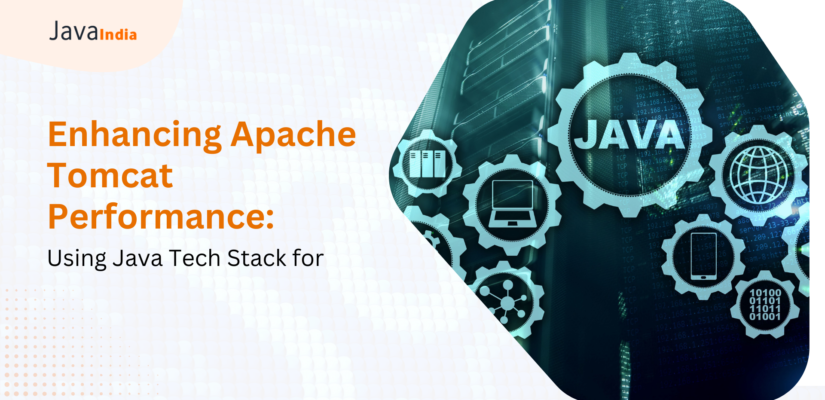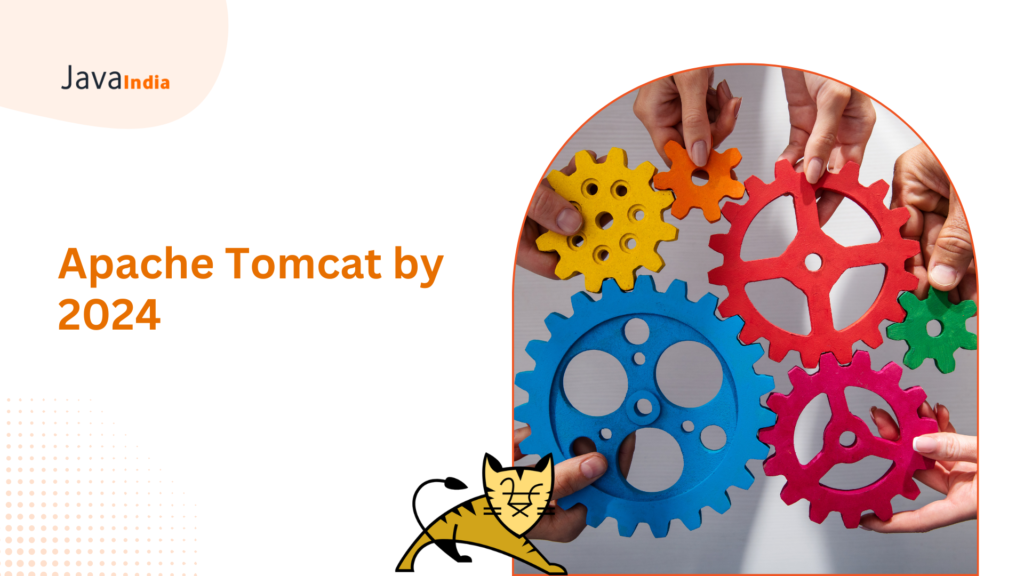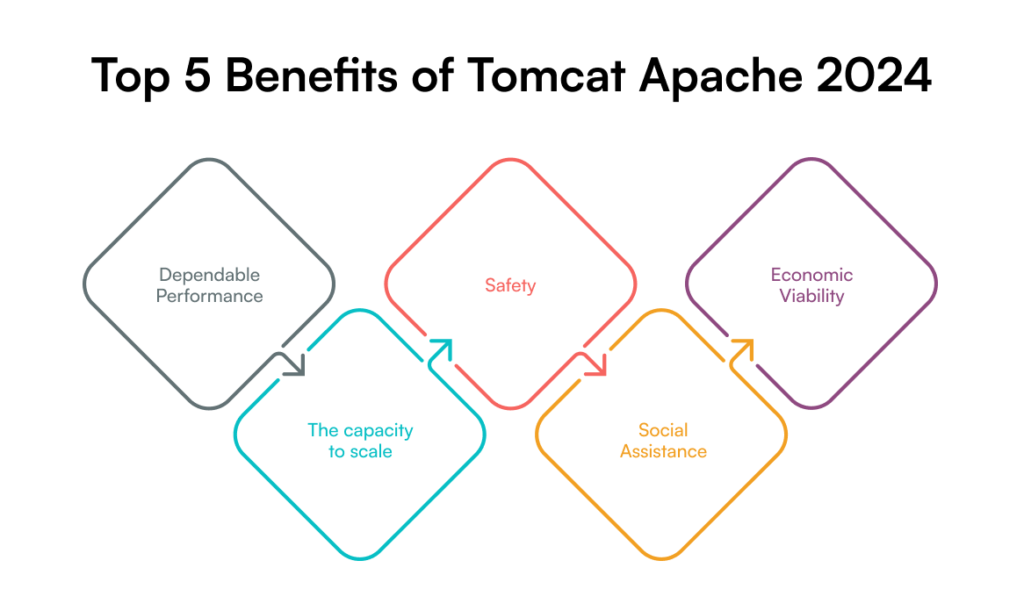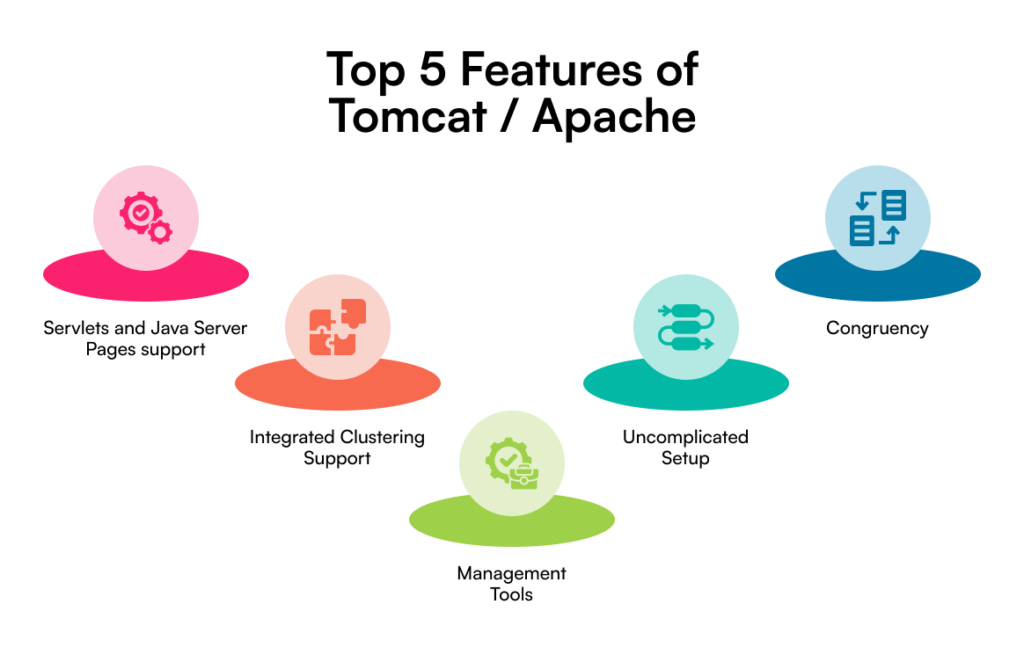
Enhancing Apache Tomcat Performance: Top Practices & Tips in 2024
Apache Tomcat has emerged as a good option to choose for Java application servers. Moving on to Tomcat, we will describe how it developed in 2024, and also cover its perks and capacities, and what companies can do with it.
In this blog, we will cover Java Integration Services and Spring Boot for eCommerce which are pieces of these pivotal elements of company optimization.

Apache Tomcat by 2024: A Breakthrough
Apache Tomcat starting from the launch after a series of upgrades and suggestions, was more familiar to arose of the released version. In addition, as time goes by, the field will witness more innovations in the areas of efficiency, security, and scalability by 2024. Recently released Apache Tomcat has upgraded support for current web standards and technologies. Furthermore, and it can be a great choice as you can use it to create websites with less code volume.
- Apache is still the most widely used web server, powering 30.2% of all websites using a known web server.
- Conversely, Tomcat has a lower share; 0.1% of websites use it.
- Apache has a use share of 22.6% among the top 1,000,000 websites, while Tomcat is utilized by only 0.1% of them.

Top 5 Benefits of Tomcat Apache 2024
In the realm of Java application servers, Apache Tomcat is still a mainstay, providing companies with a wealth of advantages to guarantee the smooth running of their web applications.
1. Dependable Performance
Because Apache Tomcat is so good at handling large amounts of traffic, web applications continue to function flawlessly even during times of high use. Because of its strong performance characteristics, it’s the best option for companies looking for web applications that are consistent and dependable. Apache Tomcat increases customer pleasure and loyalty by effectively managing incoming requests and processing data to deliver consumers a seamless and continuous experience.
2. The capacity to scale
The flexibility of Apache Tomcat to grow both horizontally and vertically makes it easy to accommodate changing business needs, which is one of its main benefits. Whether an unexpected spike in traffic occurs or your application has to manage increasing data volumes, Apache Tomcat can easily scale up or down to guarantee peak performance and availability. Apache Java Development can take advantage of fresh development prospects and adjust to shifting market needs thanks to this scalability feature, which eliminates concerns about infrastructure constraints.
3. Safety
Because online assaults and vulnerabilities are a constant concern, security is critical for organizations that operate online. To mitigate this worry, Apache Tomcat has put strong security mechanisms in place to guard against data breaches, illegal access, and other security risks. Java Development Company has features like role-based access control, session management, and SSL/TLS compatibility, Apache Tomcat assists companies in protecting their online assets and maintaining the confidence and trust of their clients.
4. Social Assistance
Access to a thriving and active community that offers helpful materials, support, and updates is an advantage for users of Apache Tomcat. To get advice and knowledge on everything from best practices to troubleshooting techniques, you can look to the Apache Tomcat community. By using this extensive reservoir of information and expertise, companies can surmount obstacles with more efficiency, remain up to date on the most recent advancements, and maximize their utilization of Apache Tomcat to foster prosperity.
5. Economic Viability
For a company of any size, the Apache presents a major cost-saving advantage as an open source. Opposite to commercial software, which can feature high license fees and ongoing maintenance charges, Tomcat can be utilized free of charge and thus it is a cost-effective option for businesses seeking to slash their IT allocation. Being pocket-friendly, Apache can be used by startups, small companies, and large corporations for capital optimization of enterprise goals and other areas such as resource allocation.
- Apache performs well when it comes to managing heavy traffic loads, which guarantees the seamless running of online applications.
- Tomcat’s ability to scale both vertically and horizontally makes it simple to meet expanding business requirements.
- To guard against online attacks and weaknesses, Apache has robust security measures in place.
- Users can access useful forums, resources, and updates from the vibrant Apache community.
- Because Tomcat is open-source, it is an affordable option for companies of all kinds.

Top 5 Features of Tomcat/Apache
Apache Tomcat is a popular option for creating dynamic and scalable online applications since it is a flexible and strong Java-based application server that provides developers with a wealth of functionality.
1. Servlets and Java Server Pages support
Because of its strong support for Servlets and Java Server Pages (JSP), Apache Tomcat is a popular option for creating dynamic web applications. The core technologies of Java server-side programming, servlets, and JSPs enable programmers to work with databases, application programming interfaces, and other online services in addition to creating dynamic content. Thanks to Apache Tomcat’s extensive support for Servlets and JSPs, developers can create dynamic, feature-rich websites that satisfy the needs of contemporary customers.
2. Integrated Clustering Support
Clustering is supported by Tomcat by default, allowing web applications to have high availability and load balancing. Through clustering, many Apache instances can function as a single, cohesive system, dividing up incoming requests across several servers to guarantee peak performance and dependability. Businesses can improve the user experience by handling greater traffic and horizontal scalability of their web applications without experiencing downtime or performance loss by using clustering capabilities.
3. Management Tools
Apache offers developers a comprehensive set of strong management tools for configuring and monitoring servers. These tools provide thorough insights into the health and performance of Apache servers, enabling administrators to keep an eye on . Resource utilization, identify problems, and adjust configuration parameters for peak performance. By Java App Testing developers can reduce operational costs and increase overall productivity by streamlining deployment. Moreover troubleshooting, and maintenance operations with the use of simple management solutions.
4. Uncomplicated Setup
Apache Tomcat is well known for its straightforward configuration options, which make development and maintenance easier for developers. Because Apache Tomcat’s configuration files are clear and well-structured, developers can easily modify server parameters like ports, connectors, and logging. Furthermore, Apache Tomcat allows environment variables and external configuration files, which offers ease and flexibility. Hire Java Developers they concentrate on creating amazing applications by speeding up the development and deployment process .Also with its easy-to-use and intuitive configuration choices.
5. Congruency
Apache Tomcat is compatible with many Java frameworks and tools, giving developers freedom in their projects. Apache Tomcat easily interacts with popular Java frameworks like Spring, Hibernate, Struts. Moreover, Apache Tomcat ensures compatibility with contemporary development techniques and tools by supporting the most recent Java specs and standards. Java Mobile App Development makes it easy for developers to create scalable and reliable web applications.
- Apache is a great choice for developing dynamic web applications since it offers strong support for Servlets and Java Server Pages.
- Built-in support for clustering is provided by Apache Tomcat, enabling load balancing and high availability.
- For server monitoring and configuration, Tomcat comes with a full suite of powerful management tools.
- Tomcat is renowned for its simple configuration choices, which simplify deployment and upkeep.
- Apache provides developers with flexibility in their projects by being interoperable with a large number of Java frameworks and tools.
Apacheis a vital tool for Java developers because of its extensive feature set. With support for Servlets and JSPs, as well as integrated clustering features, administration tools, straightforward configuration choices. Furthermore, Java framework compatibility, Tomcat gives developers all the tools they need to create dependable and effective online applications. Regardless of your level of expertise as a developer. It can also provide users with amazing online experiences.
How Companies Can Use Apache Tomcat to See Growth in 2024?
Businesses can enhance their web applications, boost speed, and provide a smooth user experience by using its benefits and capabilities. Because of Apache Tomcat’s cost-effectiveness, security, and scalability, companies can fulfill consumer expectations, optimize processes. It also, and spur development in the digital economy.
How eCommerce with Spring Boot Promotes Business Development?
Popular Java framework Spring Boot’s quick development capabilities, broad ecosystem, and simplicity of use make it a great fit for eCommerce apps. Businesses can create scalable, high-performing eCommerce systems that meet the expectations of contemporary customers. Also by combining Tomcat with Spring Boot. Java web development will enhance revenue and market share.
How Java Integration Services Promote Business and Growth Optimization
Within a company ecosystem, Java Integration Services are essential for tying together various systems, apps, and data sources. Businesses can increase communication between internal and external stakeholders, simplify operations, and optimize data flow by using Java Integration Services with Tomcat. Java Maintenance and Support increased productivity and efficiency as a result of this optimization eventually resulting in company expansion.
Final Thoughts
Apache Tomcat is still a strong and dependable option for Java application servers in 2024. Through comprehension of its benefits, attributes, and expansion potential, enterprises can enhance their efficiency. Furthermore, stimulate creativity, and maintain a competitive edge in the marketplace. Sustained growth and success can be achieved by using technologies such as Java Integration Services and Spring Boot for eCommerce to further improve company capabilities.
FAQ
1. What is Tomcat, Apache?
Ans. The Apache Software Foundation is the developer of the open-source Tomcat application server, which runs on Java. It provides an environment for deploying and executing Java web applications by acting as both a web server and a servlet container.
2. How is Apache HTTP Server different from Apache Tomcat?
Ans. Although the Apache Software Foundation maintains both Apache and Apache HTTP Server as open-source projects, their functions are distinct. While Apache is a Java application server made especially for running Java web applications. Moreover including dynamic content produced by servlets and JSPs, Apache HTTP Server is a general-purpose. Web server that mostly provides static information.
3. Is Apache Tomcat appropriate for use in real-world settings?
Ans. Yes, companies of various sizes—from tiny startups to major corporations—use Apache Tomcat extensively in production settings. Due to its strong speed, scalability, security features, and administration tools, mission-critical web applications can be hosted on it.
4. How can I protect my installation of Apache Tomcat?
Ans. To shield web applications from typical vulnerabilities like SQL injection, XSS, and unauthorized access, Apache offers some security measures. Using SSL/TLS encryption for secure communication, putting in place access controls and authentication procedures. Furthermore updating Tomcat frequently to the most recent version to patch security flaws, and setting up security. We can see realms for user authentication and authorization are some best practices for securing Tomcat.
5. Is it possible to combine Tomcat with other frameworks and technologies?
Ans. Indeed, Apache Tomcat works very well with many other Java frameworks and technologies, such as Hibernate, Spring, Struts, and others. These technologies are readily integrated by developers with Apache , allowing them to take full use of their capabilities. Also it create robust, scalable online applications. Furthermore, Tomcat is compatible with contemporary development techniques and tools by adhering to industry standards and requirements.

